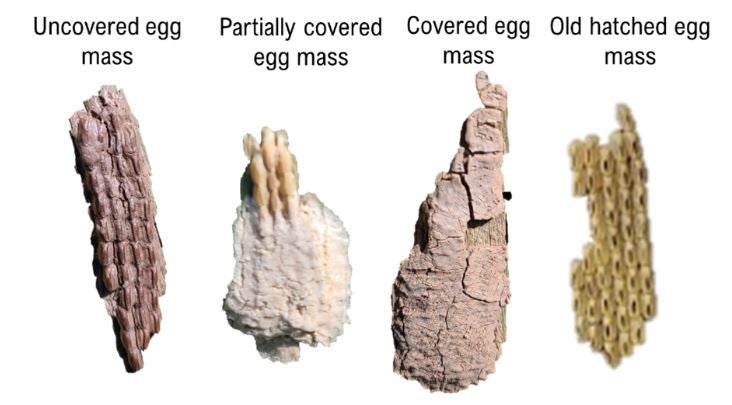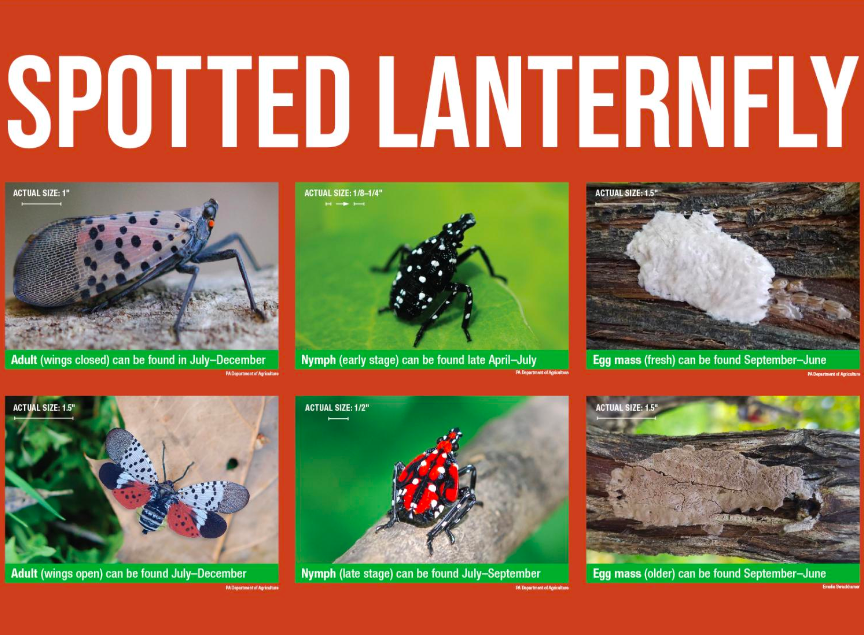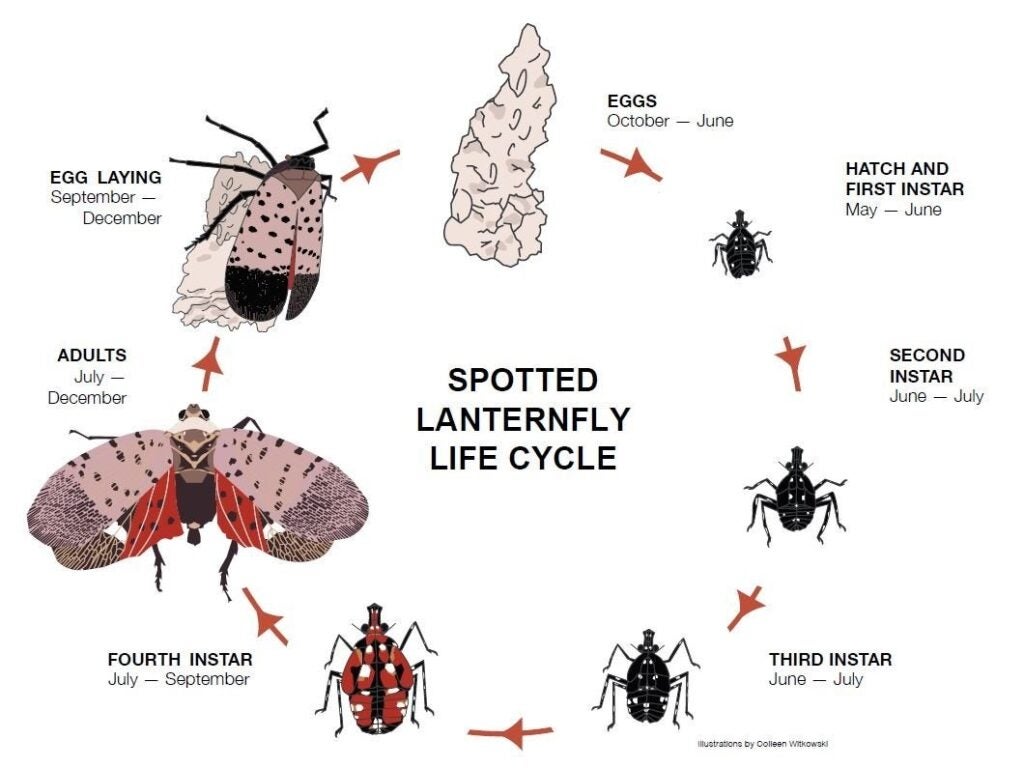SLF Identification
Adult spotted lanternfly are about 1 inch long. They have black bodies and transparent gray forewings with black spots and black wing tips. Their hindwings are bright red and highly visible when the lanternfly’s wings are open. Spotted lanternfly are planthoppers which means they are extremely fast. They can also fly short distances, but their primary mode of transportation is jumping or hitchhiking.
Females lay eggs from September to December. Egg masses are roughly 1.5 inches long and typically covered in a gray, mud-like substance. They may be laid on a variety of surfaces such as trees, houses, rocks, etc, and each egg mass contains between 30-50 eggs.
Once hatched, spotted lanternfly first instar nymphs are about 1/8 an inch long. They have black bodies with white spots on their back. As they grow into second and third instar nymphs, they retain their black bodies and white spots, and increase in size with every molt. In contrast, their fourth instar form is about 1/2 an inch long with a bright red body, black stripes and white spots. Similarly to adult SLF, nymphs are very fast and can jump far, however are unable to fly.
SLF Life Cycle
Spotted lanternflies can be easily identified once the life cycle is understood. Current US populations have one generation per year with three life stages: an overwintering egg stage, four nymphal developmental stages (instars), and an adult stage. For more information on the spotted lanternfly identification and life cycle, visit the Penn State Extension’s What to Look For page.

Fig. 1. Spotted lanternfly female ovipositing an egg mass. 
Fig. 2. Freshly oviposited spotted lanternfly egg mass, about 1 inch in length. Females cover the egg masses with a grey putty-like substance. Photo credit: PA Dept. of Ag. 
Fig. 3. Spotted lanternfly egg masses 
Fig. 4. Early instar spotted lanternfly nymphs are black with white spots, about ⅛ to ¼ inch. Photo credit: Richard Gardner. 
Fig. 5. Spotted Lanternfly nymphs turn red as they approach fourth instar. Photo credit: USDA APHIS. 
Fig. 6. Spotted lanternfly adult (left) and fourth instar nymph (right). Photo credit: USDA APHIS. 
Fig. 7. Fourth instar spotted lanternfly nymphs aggregating on tree of heaven. Photo credit: Penn State Extension.


